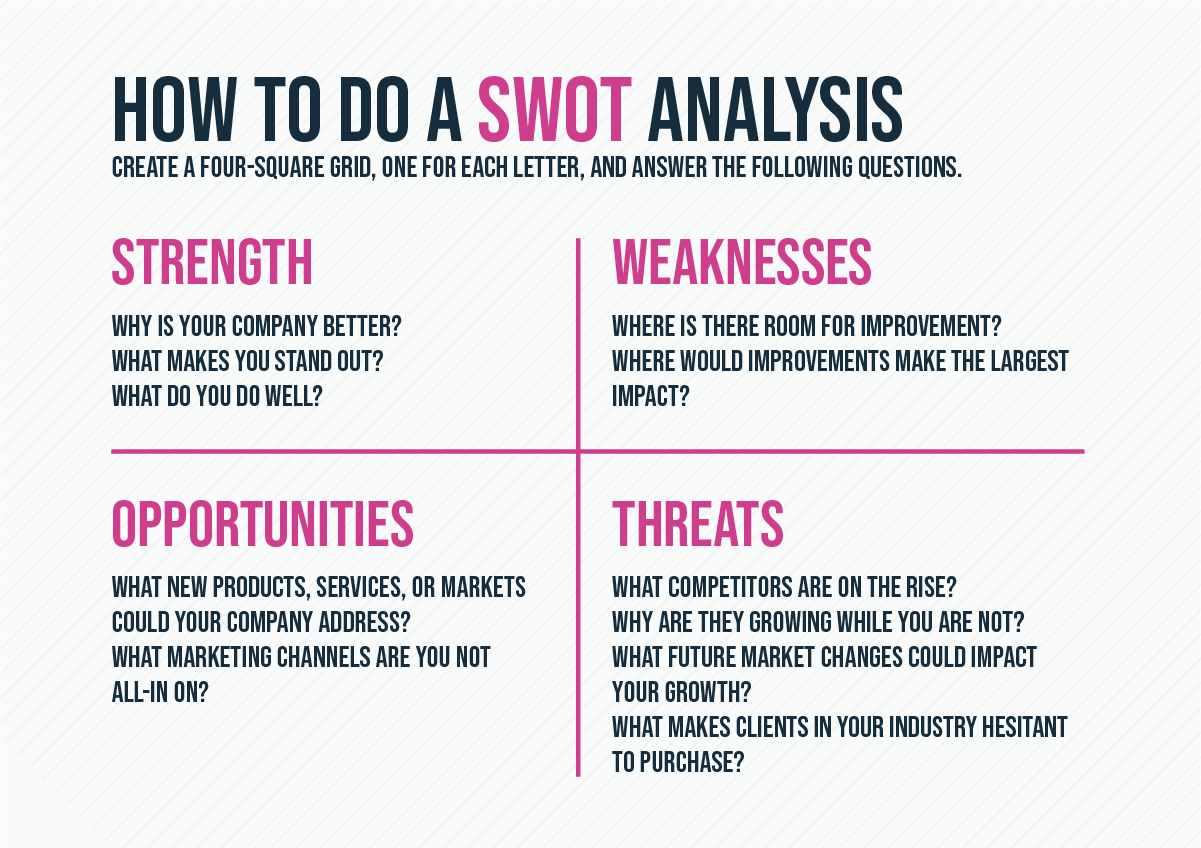6 Barriers to Growth That You Can Solve This Week

In the early days, most companies are lightning-fast. Systems are streamlined, most decisions can be made in a matter of minutes or days, there is little to no red tape; things get done fast because they have to.
Every business eventually reaches a point where growth becomes challenging. Processes are complex, new customers are hard to find and keep, and shifting direction seems like an impossible task.
In a business culture that seems to celebrate bigger as better, it can be challenging to figure out what is holding your firm back and even more challenging to figure out how to solve those problems.
But, before you can work to overcome the growth barriers your company is facing, you need to figure out what those barriers are.
Identifying the Growth Barriers Holding You Back
What do you think is keeping your company from growing? Competitors, a sluggish market, maybe even a terrible job market? When considering challenges, most firms focus on these types of external challenges.
But, what about the challenges that are right under your nose?
Eighty-five percent of executives say that the greatest barriers to achieving business growth lie inside their own four walls. Do your workflow processes actually work? Do employees have the support they need? Are you providing the customer service your company committed to in the early days?
There is only one way to figure out your greatest challenges—by asking. Here are four ways to determine what is holding you back.
Speak to Team Members: Your team members are the ones on the front lines doing the work every day. They deliver your services, they talk to your customers, and yet they are often the last place many owners or executives go for feedback. Create an anonymous form using a tool like Google Forms and ask: What frustrates you? What makes your jobs more challenging? What do you spend the most amount of time on? Where do you need more support and what would that support look like?
Ask Management: Managers tend to have a higher level view of the business. They have an understanding of a specific department and are usually in charge of handling escalated issues. What challenges are they facing? Where are their teams struggling? What KPIs are not working?
Dig Into The Numbers: How are your marketing campaigns performing? Are they doing better or worse than last year? What about payroll? Are there metrics that aren’t budging, no matter what you do? These may be the systems that need to be changed.
Talk to Your Customers: Why are your happy customers happy? What frustrates them about your industry as a whole? When a customer churns, why do they leave? Can you fix these issues? Why or why not?
Once you have an understanding of what is holding you back, it’s time to dive into the solutions.
Barriers to Growth You Can Solve This Week
When facing challenges, it is easy to fall into the “If only….” mindset. If only we had more funding, if only we could bring on more customers, if only we could afford to pay employees more.
It is time to stop “if only-ing” and start doing. Here is how to solve your growth barriers and get on the road to faster growth and higher profits.
Lack of Strategic Planning
Where will your firm be in a year? Three years? 10 years? What happens if the industry changes and puts your main source of income in jeopardy? Do you have a plan?
A company that fails to plan for the future is left at the mercy of the market. A thorough but flexible strategic plan will help your firm establish relevant goals and plan for the unexpected.
Solution: Perform a SWOT (strengths, weaknesses, opportunities, threats) analysis, then lay out a plan for the next 1, 3, and 10 years. Include both short and long-term goals in your strategy. This will reduce barriers to growth by providing flexibility when new problems arise.

Start by asking why your company exists. What environment do you want to create? Is that sustainable long-term? What happens if there is a major shift in your industry? Can you diversify your profit lines?
Strategic planning will help you prepare for threats before they become hazards to your business. Keep in mind that this plan must be flexible—you aren’t promising where the business will be in 10 years, but rather outlining possible growth patterns and preparing for them.
Recruiting and Retaining Talent
Today, 6 out of 10 Millennials (workers born between 1981 and 1996) are open to new job opportunities. And while there is some debate about whether Millennials are really the job hoppers they have been portrayed to be, the fact remains that retaining talented employees is challenging, and high turnover can limit growth.
After all, it is hard to push the envelope when you are constantly hiring and training new employees. Here are some changes you can make this week to keep and attract employees.
Solution 1 — Outsource Hiring: Smaller businesses might not need full-time HR or recruiting staff. Consider bringing on expert consultants to help you find the right workers.
Solution 2 — Hire For Culture and Interest: Hire employees who are dedicated to your business’ mission and excited for your vision, not just those with the perfect educational background. Seventy-five percent of HR professionals report there is a current shortage of skills for current job openings. Hire for soft skills, and then train. A recent study found that between 70% and 87% of workers are more likely to stay at a job with career growth or development opportunities.
Solution 3 — Profit Share: Tie a portion of salary or a bonus to your company’s performance. Sharing the company’s profits encourages feelings of ownership and personal responsibility. And, this also means that payroll costs will go down when revenue is down, which can make it easier to course correct.
Outdated Tech
Old, outdated tech can be a huge roadblock to success. Whether your customer service reps are struggling to provide service on sluggish computers or your current CRM is no longer meeting the needs of your company, outdated tech can be a massive barrier to growth.
Fixing the issue can feel overwhelming.
Though onboarding may be a hassle, you could significantly improve your company. Today, there are new technological solutions for nearly every business task. AI can now automate customer service, send reminders, accept orders, process payments, and much more.
Solution: Invest in the Right Tech
The cost of new devices, software, and tools may be hard to swallow. The key is to find the right technology solutions for your business. For example, are your salespeople spending 25% of their time tracking outreach efforts? If you could reduce tracking time by onboarding an integrated CRM, how many additional hours could they spend selling?
Outdated tech also makes it difficult to track stats in real-time. When critical information is delayed, so is your response. If an outdated data system means you notice a drastic increase in customer complaints, you could miss the opportunity to fix the issue before it becomes more widespread.
Find areas where new tech would have the biggest impact, and look for resources for onboarding those programs. Remember, this is an investment in your business’ future.
Cash Flow Management
Managing cash flow is crucial to success and growth. Making sure payments are made and checks are deposited on time is more important than just about any other part of your business.
In fact, cash flow problems are the second most common reason why businesses fail, according to research from CB Insights.
Why do so many businesses struggle with managing their cash flow? The manual accounts payable process is labor-intensive and time-consuming. Paper-based systems make it difficult to take advantage of early payment discounts, and fraud and human errors can cost your company thousands of dollars.

Solution: Implement Accounts Payable Automation to Dramatically Improve Cash Flow
Accounts payable automation can dramatically speed up the entire invoice management and invoice processing workflow, even automating most if not all of it. You’ll never have to worry about paying late fees or double paying an invoice by mistake. In addition to speeding up the AP process, firms that use AP automation can reduce fraud and free up employees to focus on more mission-critical tasks.
Poor Customer Service
When customers feel unappreciated, can’t find the information they need, are redirected to multiple agents, or are put on hold for too long, they tend to feel like the company they are giving money to doesn’t care about them.
When customers aren’t happy, they move on to one of your competitors. In fact, businesses lose an estimated $62 billion every year due to poor customer service.
Bad customer service can hinder growth in several ways. For starters, it can reduce profits, and damage your company’s reputation. If your company has a poor reputation for customer service, it can also make hiring top talent challenging.
Customers want consistent, timely, and personalized service, so providing exceptional service should be a top priority for every company.
The Solution: Improve Customer Response Times and Consider Using Chatbots
The simplest solution to poor customer service is to offer better service (which, to be fair, is easier said than done). Start by speaking directly with customers, address issues quickly, and listen to customer-facing employees.
Consider using a chatbot on your website or within your product that can answer basic questions and reduce call volumes. By accessing historical chat and call logs, these programs use machine learning to learn about your business and provide accurate answers, ask clarifying questions, and even direct customers to a human when necessary.
Communication Barrier
As companies work towards a more flexible work environment, communication is becoming more challenging than ever. Time zones, flexible working hours, and a rise in remote workers has impacted our ability to effectively communicate with our coworkers and bosses.
Poor communication is more than a nuisance; it can impact your bottom line.
In fact, companies with effective communication are 3.5 times more likely to outperform those that don’t.
The Solution: Utilize Technology to Make Communications Easier and Stay Organized
Communicating by email can be challenging and confusing when groups are working on multiple projects. Employees are wasting time digging through hundreds of emails and missing critical information in the process.
Instead, use project or team-specific communications tools, such as Asana and Slack. Asana, for example, lets teams create tasks and projects, add files, and track progress. All the information is in one place, making it easy to find information about, for example, your favorite client’s next deliverable.
Slack is more of a discussion tool. It uses “channels” to organize conversations. For example, you might have a channel to report bugs, a channel to discuss onboarding, and even a channel for sharing your favorite GIFs.
These tools not only help to organize communications, but can also help remote employees feel like they are part of a team—which can improve their production.
Final Thoughts
Don’t let growing pains hold your company back. At some point, every successful company realizes the same processes that worked when they were a 5-person ( or 25-person) team will not scale any further.
You cannot win in the marketplace if your organization is stifled by its own growth.
Talk to your team; figure out what is holding your company back, and find the tools and strategies you need to overcome those obstacles. The growing pains will be worth the growth.